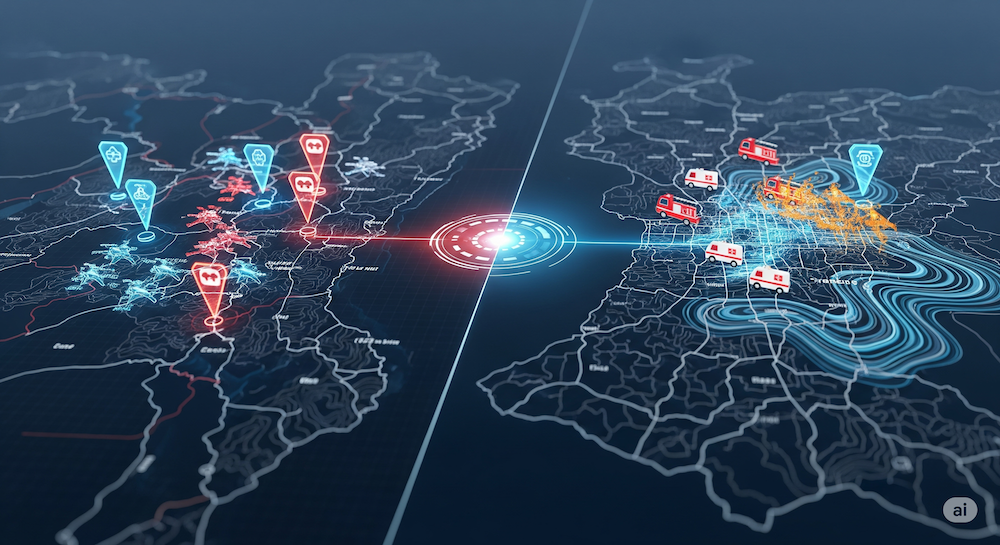
High-Stakes Adaptation: The Dual-Use dEO
Intelligence Under Pressure: The dEO Paradigm in High-Stakes Environments
02 July 2025
So far, we've explored how the dEO paradigm can transform software development and enterprise operations. But the true test of an adaptive intelligence is how it performs under extreme pressure, in chaotic environments where conditions change in an instant.
This is where dEO's ability to create a living, shared model of reality becomes a mission-critical capability.
Consider a Cognitive Command & Control (C2) system for defense or emergency response. Traditional C2 systems are static maps and dashboards; they show where things were a moment ago. A dEO-powered C2 system is a living model of the operational environment right now.
-
Sensor data from drones, satellites, and human reports (parsed by LLMs) don't just update icons on a screen; they update the core ontology in real-time.
-
When a bridge is destroyed, the @Bridge monad in the shared graph instantly changes its state to "impassable." Every friendly asset whose plan depended on that bridge—from logistics convoys to medical evacuation teams—is immediately aware. Their pathfinding algorithms, which are part of the same living system, can autonomously generate new, optimized routes without waiting for a central command.
-
The system can also perform predictive maintenance on a fleet of vehicles. By creating a Digital Twin for every asset and fusing sensor data with operational context (e.g., "operated in desert"), the dEO engine can discover novel failure patterns and proactively trigger the supply chain before a critical part fails.
This architecture also creates a new paradigm for critical communications. In chaotic scenarios where central servers fail, a dEO-powered system remains resilient. The shared ontology acts as a decentralized communication protocol. Units can synchronize their local models peer-to-peer whenever a connection is made, ensuring the entire team maintains a coherent operational picture even with intermittent connectivity.
This resilience is inherently dual-use. The same engine that provides an advantage in a defense scenario is a powerful tool for good in a humanitarian crisis. By simply changing the entities in the ontology, the mission adapts:
-
@Enemy_Unit becomes @Trapped_Survivor_Group.
-
@Threat_Zone becomes @Flooded_Area.
-
@Supply_Convoy becomes @Medical_Team.
The system's core ability to understand a complex environment, process real-time changes, and optimize resource allocation remains the same. It demonstrates how a truly adaptive intelligence can provide clarity and effective action in the most demanding situations imaginable.
#DualUse #C2 #Logistics #AIforGood #DefenseTech #CognitoOne #dEO